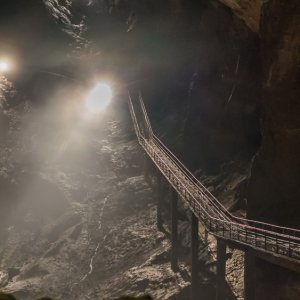The Great Leap Forward

STORY INLINE POST
Mining in Mexico has been an important part of the country's economy for a long time. This industry contributes approximately 2.5% of GDP, and generates close to 2.5 million direct and indirect jobs. Mexico has a vast mining potential that is supported by its diverse and rich geology. The mining industry has been evolving in recent years with major companies focusing on increasing productivity and cost management through simpler and more responsible organizations.
Even in times of great uncertainty there is something that all experts agree on: the future of Mexican mining must be profitable, safe and responsible. The question of course is how. Large high-grade deposits are becoming increasingly rare. In addition, the industry is beset by a complex history of poor community relations and lack of environmental stewardship. Furthermore, due to the high pandemic cost, states are looking for ways to recapitalize, which could create tax pressures. Thus, productivity and cost efficiency have become a priority for all companies.
As a result, the industry is seeking methods to enhance performance. Here are four key competitive elements that will impact the Mexican mining sector in the coming years:
Automation
Automation will improve productivity, safety, and consistency. The use of autonomous trucks increased by 39% in 2022. This trend continues to rise, driven primarily by major Australian operations but closely followed by other countries.
Additionally, autonomous vehicles for underground mining have been deployed in multiple operations and now allow mining companies to operate in sectors too dangerous for their employees without putting them at risk.
This will reduce costs and hazards while improving the quality of the final products. Automation will reduce manual labor and increase efficiency in a variety of operations, such as drilling, transportation, material handling, and process control. While some fear the repercussions that automation may have on employment, evidence shows that countries with the highest automation also have higher standards of living, wages, and employment rates. Automated systems can also be used to monitor environmental conditions and detect potential safety issues.
Data and Analytics
Data is all about making informed and data-driven decisions and companies that make better decisions consistently over time generate competitive advantages. This is especially important while confronting volatile price scenarios. By analyzing large amounts of data, it is possible to gain insight into areas where cost savings can be made, such as reducing energy consumption and optimizing production processes. Data and analytics can also be used to identify potential safety risks, predict and prevent equipment breakdowns, and optimize maintenance schedules.
In recent years, we have seen mining companies use machine learning and other advanced data analysis techniques to evaluate geomechanical risks, estimate resources, detect issues in advance, assign trucks to shovels, determine optimal routes, design drilling grids, predict failures in production equipment, predict the scattering of dust clouds caused by blasting, reduce operational risks, parameterize mills and crushers, help operate flotation plants increasing metal recovery and optimize water and energy use, among other things.
Integrated Operations
Integrating operations in mining is a strategy that emphasizes collaboration and automation of processes throughout all stages of the mining process. It is a concept that has been gaining traction in the mining industry in recent years due to its potential to improve efficiency, reduce costs and optimize production.
In countries like Australia, Canada and Chile, Integrated Remote Operations Centers (IROC) are a patent reality. Practically all large-scale mining operations in those countries have implemented this operational strategy. In Mexico, this trend is starting.
IROC is a holistic approach to mining that seeks to maximize efficiency by incorporating technology and data throughout the mining process. This includes automation of processes and the use of sensors and geospatial information systems to monitor and control mine operations. IROC also relies on a centralized decision-making process, which allows operators to make informed decisions in real time.
The key benefits of integrated operations are improved operational efficiency and cost savings. By streamlining the mining process, IROC can reduce costs by eliminating redundant tasks and reducing the need for manual labor. Additionally, IROC can improve safety by reducing the risk of human error and ensuring that equipment and processes are operating at peak efficiency.
ESG Leading Practices
Environmental, social, and governance (ESG) considerations are a key part of responsible mining operations. ESG issues are becoming increasingly important in the mining industry, as evidenced by our annual Top 10 Risk Assessment study, which reveals that ESG-related risks rank No. 1 for the industry globally.
Mining is an industry with a major impact on the environment and society, so mining companies must take on a strong responsibility to protect the environment and work closely with local communities.
Companies must manage resources sustainably, minimize negative impacts on the environment, respect the rights and dignity of workers, and work to promote local socioeconomic development. This means engaging with the local community to ensure their mining projects are beneficial to society, not just compliant with the laws and regulations.
























